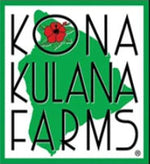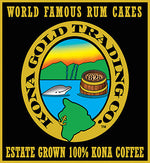Why does coffee from the mountains taste so good? The secret often lies in the height at which it’s grown. As you go higher, the air cools and the beans grow slowly. This gentle pace leads to flavors that are richer and more vibrant, with an aroma you can’t ignore.
Buddha’s Cup’s Kona coffee farm specializes in high-altitude beans that deliver vibrant flavor. This article explores how growing coffee above the clouds shapes the taste in your cup. We’ll look at the climate, growing conditions, and what makes beans from these heights truly special.

Key Takeaways
- High-altitude coffee develops more complex and nuanced flavors than beans grown at lower elevations.
- Slower growth at high elevations leads to denser beans with higher acidity and natural sweetness.
- Coffee at high altitude benefits from cooler climates that limit pests and make organic farming easier.
- Premium coffees like Kona Coffee stand out because altitude shapes their flavor, body, and aroma.
- Farming coffee at high altitude often results in lower yields but consistently higher quality beans.
- Buddha’s Cup produces 100% Kona coffee at high elevation for peak freshness, flavor, and character.
What Is Considered “High Altitude” for Coffee?
Where coffee grows has a big impact on its flavor. Elevation changes everything, from how fast the cherries ripen to the taste in your cup.
- Low altitude is anything below 2,500 feet. Coffee grown here matures quickly, which usually means a softer, more straightforward flavor. You’ll often find these beans in everyday blends.
- Mid altitude covers 2,500 to 4,000 feet. Beans have a bit more time to develop, so the flavor is more balanced. Expect some gentle acidity and a smooth, easy finish.
- High altitude means farms above 4,000 feet. The cooler air slows everything down. Beans take their time, picking up dense structure and vibrant, lively flavors. These coffees are often bright, crisp, and full of character.
The Specialty Coffee Association uses these elevation bands to help classify beans around the world. When you see a coffee labeled as “high altitude” or “strictly high grown,” it often meets these recognized standards, which signals quality and a cup full of vibrant character.
Why Altitude Affects Coffee Quality

Altitude shapes coffee in quiet but important ways. As you climb higher, the growing environment changes. Each shift leaves its mark on the beans.
Cooler temperatures slow the ripening of coffee cherries. The fruit stays on the branch longer, drawing in more sugars and developing brighter, deeper flavors. Rain at elevation falls gently and steadily.
This rhythm gives the plants just enough water, never too much and never too little. Roots anchor into mountain soil, which drains well and holds rich minerals. They reach deep, drawing strength for the entire plant.
All these small changes add up. The result is high-altitude coffee with more depth, a livelier character, and a clean, crisp finish in every cup, as reported by National Library of Medicine.
Slower Growth, Better Flavor
Growing coffee high in the mountains really changes the flavor of the final brew. Because it’s cooler up there and the fruit takes longer to ripen, the beans end up tasting more complex, richer, and easier to tell apart.
Lower Temperatures Delay Ripening
When coffee grows at higher altitudes, the air is cooler. This drop in temperature slows down how fast the cherries ripen on the tree.
The process isn’t rushed. With more time, the fruit has a chance to build up sugars and acids.
As these compounds develop, the beans become more flavorful. The cup you get is brighter, with lively notes. Sometimes it’s citrus, sometimes floral, often unique to the region.
That extra time on the branch shapes every layer of taste.
Denser Beans, Stronger Profile
The slower growth at high altitude makes coffee dense. The denser beans are roasted more evenly, and this is what brings out a consistent flavor profile.
When they are ground, they yield consistent particles that enhance extraction and yield a well-balanced, full-bodied cup. This concentration is among the factors that make high-altitude coffee a treasure to roasters and baristas.
Climate Stress Leads to Resilience and Flavor
Coffee at high altitude faces unique climate stress. These challenges build strength in the plant and shape the taste of every bean.
Cold Nights and Warm Days Create More Acidity
In the mountains, temperature changes fast. Mornings start with sunlight warming the coffee cherries, pushing them to grow and mature. But at night, the cool air settles in, and ripening slows.
This back-and-forth is nature’s way of deepening flavor. Coffee beans respond by storing up acids and sugars, which later become the vibrant tastes in your cup. That’s where you get the brightness and all those layered, crisp flavors.
If you love a coffee that wakes up your senses, thank the mountain climate. It’s the secret behind every lively, high-altitude brew.
Altitude Reduces Disease and Pests
Altitude helps protect coffee plants as much as it shapes their flavor.
In higher mountain regions, cold and thin air make it hard for insects and fungi to thrive.
Fewer pests mean farmers can use fewer chemical sprays.
Organic and natural farming is easier this way. Healthier plants lead to cleaner beans and a purer cup. Natural resistance to disease and pests is one reason high-altitude coffee stands out for both quality and taste.
Altitude and Kona Coffee: A Case Study

Kona’s coffee farms stretch along the slopes of Hualalai and Mauna Loa, two volcanic mountains in Hawaii. Elevation plays a key role here.
Farms start near 1,000 feet and rise past 3,000 feet as the land climbs inland.
At higher elevations, the air stays cooler. Coffee plants grow at a slower pace, which lets the beans develop natural sugars and acids over time. Farms like Buddha’s Cup use this slower rhythm to produce denser beans and fuller flavor.
Volcanic soil shapes each plant’s journey. It is loose, mineral-rich, and drains well. Deep roots anchor the coffee trees and draw in nutrients.
Steady sunlight each morning and gentle rain most afternoons help the plants thrive. These natural conditions work together.
Buddha’s Cup specialty coffee from the mountains is known for its smooth, balanced character and lively acidity. Altitude, soil, and climate create flavors that set this coffee apart.
Altitude’s Influence on Cupping Characteristics
Where coffee is grown really changes how it tastes when you brew a cup at home. The height of the farm above sea level affects every stage of bean development, influencing acidity, body, and the overall clarity of flavor.
High Altitude = Higher Acidity and Brightness
Coffee grown at high altitude has a bright, crisp taste. The beans develop higher acidity, which brings out notes of citrus, green apple, or berries. This acidity adds freshness and makes the flavors stand out.
Specialty coffee drinkers value this lively profile. If you want a coffee with more character and clarity, look for beans grown at higher elevations, as noted by BMC Chemistry.
Low Altitude = Milder, Less Distinct Flavors
Coffee grown at low altitudes matures quickly. Beans develop with less time to build up complex sugars and acids. The result is a smoother, earthier cup with milder flavors.
You might notice nutty, chocolatey, or woody notes. These coffees often feel soft on the palate, but they don’t have the bright highlights found in high-altitude coffee.
Low-altitude beans are common in dark roasts and mass-market blends.
They offer consistency and smoothness, but tend to lack the vibrant character prized in specialty coffee.
Notes You’ll Commonly Taste in High Altitude Coffee
High-altitude coffee has a tendency to shock new coffee drinkers with its fruity and bright flavor.
You may observe:
- A whiff of citrus, sometimes, as though some lemon or orange had been dashed in.
- Other times, your tongue picks up a little bit of berries, like raspberry or perhaps blueberry.
- You may even smell a slight, flowery fragrance, as though a light spring breeze were in the mug.
- And in the finish may be a wine-like crispness which gives layer upon layer of flavour.
These tastes are fresher and livelier as compared to those in low-altitude coffee. Beans that are grown lower tend to be more chocolatey, nutty, or earthy, and smoother but less complex.
High-altitude beans are an excellent option, especially when you want coffee with a fruity explosion or a floral hint.
Challenges of Farming Coffee at High Elevation
Cultivating coffee in the mountains is not simple. Each step requires additional care, effort, and attention.
Tougher Terrain and Accessibility
Anyone who has ever climbed a steep trail knows how exhausting it is. And now imagine going up the same hill with a sack of fertilizer or pushing a small cart of tools.
Most farms are perched on rocky ridges, and thus tractors and utility vehicles can traverse only a certain distance. Hand tools and plenty of elbow grease are all that are left. It requires twice as much energy as you would use on a level field to move supplies, to pull weeds, or to run a sprayer.
Smaller Yields but Premium Pricing
When coffee is grown at high elevations, the plants produce fewer beans. The chilly nights and thinner air slow their growth down, so every tree ends up giving a smaller harvest. Because these beans taste so good, buyers are eager to pay extra for them.
For many farmers, that higher price helps make all the extra work worth the climb.
Harvesting and Processing Complexity
Hand-picking is the norm at these heights. Each cherry is selected for ripeness. After harvest, careful drying is essential. Cool air and mountain moisture mean beans need more time and attention to reach the perfect finish.
Farming coffee at high altitude takes skill and patience. The result is a product that stands out for its quality and character.
Does Altitude Affect Caffeine Content?

Yes, altitude has an influence on caffeine. Higher altitude coffee tends to be a little lower in caffeine content than the beans produced in lower-lying farms.
The low temperatures reduce the speed of growth, making the beans more dense and flavorful.
Higher-density beans add more complexity to each cup. You end up with layered flavors and bright acidity, and a smooth finish.
The reduced amount of caffeine provides these coffees with a gentler touch that most individuals would appreciate when they desire taste rather than a powerful stimulation.
With high-altitude beans from Buddha’s Cup, you get coffee that stands out for its flavor and quality. If you’d like to explore our Kona coffee collection, these beans are a great choice.
How to Know If You’re Drinking High Altitude Coffee
You don't have to be a coffee expert to spot high-altitude beans. A quick look at the bag and a couple of keywords on the label will help you pick out coffee that grew slowly in cool mountain air and tastes bright and alive.
Check Labels and Sourcing Info
When shopping for coffee, take a close look at the packaging or website.
Specialty roasters often list the farm’s elevation or the altitude range where the beans were grown. Watch for phrases like “grown above 4,000 feet” or “strictly high grown.” Seeing this information is a good sign. It shows the roaster cares about quality and transparency.
Details matter, especially when you’re looking for the unique qualities of high altitude coffee.
Understand Origin Terminology (SHG, SHB, etc.)
Some coffee bags will use terms like SHG (Strictly High Grown) or SHB (Strictly Hard Bean).
These are most common in Latin American coffees and mean the beans were grown at elevations above 4,000 feet. Denser beans, slower growth, and better flavor are usually the result.
Not every region uses these labels, but they’re especially useful when buying from Central or South America. Even if the exact altitude isn’t listed, these terms can guide you to quality coffee at high altitude.
Ask Your Roaster or Café
Still not sure about the coffee you’re buying? Just ask. Most specialty roasters and cafes are happy to explain what SHG or SHB means, and to share more about where their beans come from.
If they’re sourcing from higher elevations, you’ll usually hear about it. It’s a point of pride and a strong sign you’re getting a cup with real character.
Buying High Altitude Coffee: What to Look For
Start by checking the coffee’s origin and listed altitude. These details are strong indicators of genuine high-altitude beans.
Next, look at the processing method. This also influences the flavor and can shape the cup’s body, clarity, and aroma.
If you're hoping to experience the bright acidity and natural sweetness typical of high-elevation coffee, choose a light or medium roast. These roast levels preserve the nuanced flavors developed during slow growth.
Ready to Taste the Difference High Altitude Makes?

Elevation has a real impact on flavor, aroma, and quality. Choosing coffee grown high in the mountains means more complexity and depth in every sip.
If you’re curious to experience this difference firsthand, Buddha’s Cup offers high-elevation Kona coffee grown for peak freshness and taste. Get in touch with us to start your high‑elevation coffee journey.
FAQs
What is high-altitude coffee?
High-altitude coffee comes from beans grown above about 4,000 feet. The cooler air slows the plant's growth, letting the beans fill out denser and richer. That density gives high-altitude coffee its clear acidity and complex flavor, setting it apart from beans grown nearer sea level.
Why does high-altitude coffee taste different?
Because cold nights and mild days slow ripening, high-altitude beans develop sugars and acids over weeks instead of days. This slow growth builds layered taste notes-floral hints, fruit brightness, a clean finish often without the heaviness some low-elevation coffees carry.
Does high-altitude coffee have more caffeine?
High-altitude coffee usually has a tiny bit less caffeine than beans from lower farms. Its denser structure does make the flavor richer and more complicated, but that extra density does not translate into more caffeine.
How can I tell if I’m drinking coffee at high altitude?
The easiest way is to scan the bag or check the web page. Look for details about elevation above 4,000 feet or labels like strictly high-grown. You can also ask your roast house or cafe; most sellers love to share their origin stories.
Why is high-altitude coffee often more expensive?
Growing coffee high up in the hills is no easy job. Workers have to climb steep land, pick every cherry by hand, and deal with smaller harvests. That extra effort and the limited amount mean high-altitude beans usually cost more, and coffee lovers are willing to pay for this because the flavor is really special.













